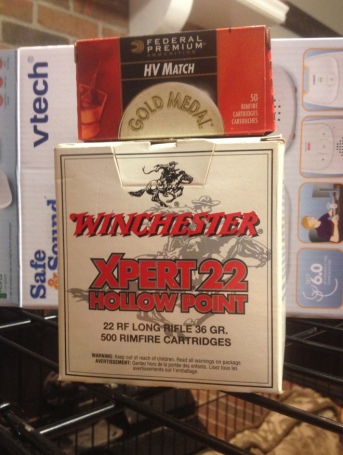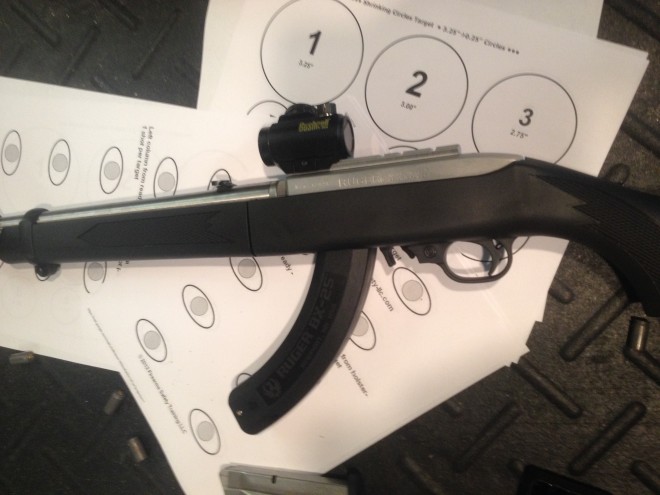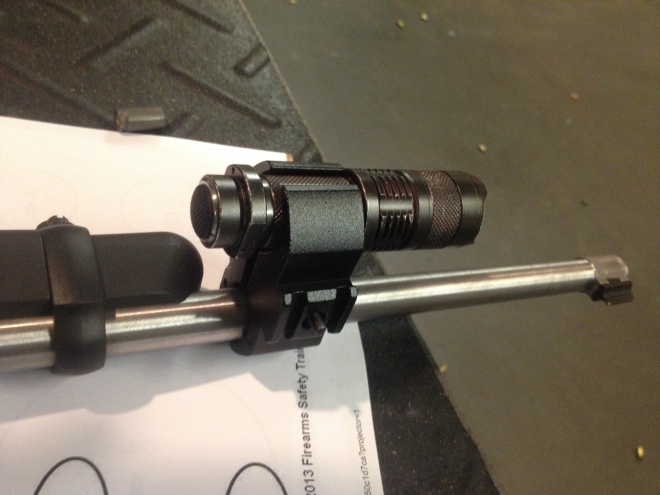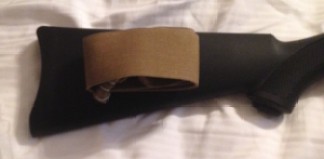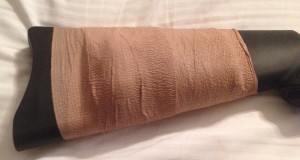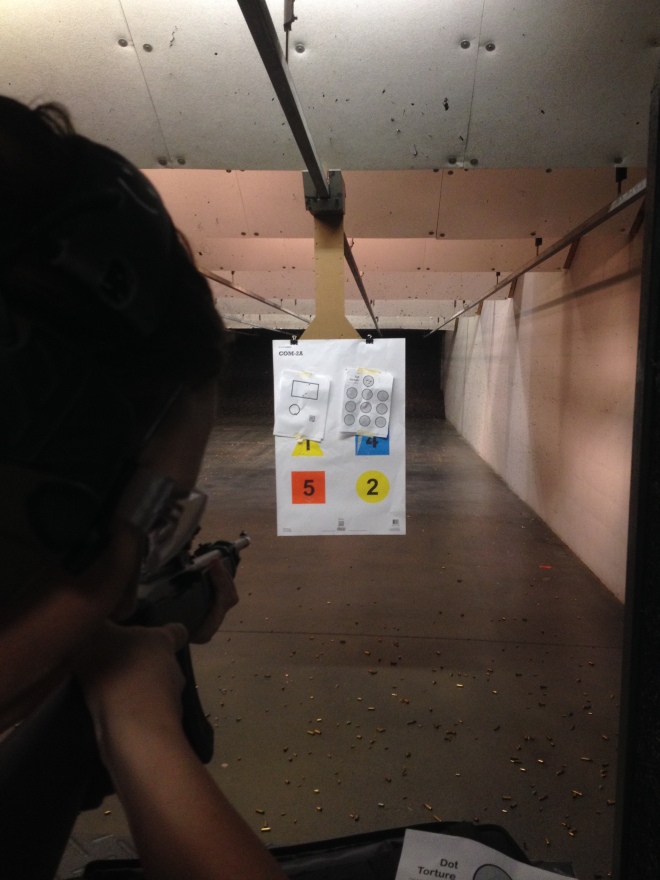This post is another in the theme of getting the most utility out of a very limited training time and budget. In the first article, I tried to give the general structure of how I allocate training and practice time to the different sub-disciplines I deem important for defense of my family and myself (you should pick yours based on your situation) . In this post, we will look at the most probable armed citizen encounters and then we can associate some skill building exercises and drills to help guarantee we are ‘good enough’ to handle most situations. I know a lot of people will take issue with only reaching for the “lowest rung of the ladder”, but hear me out first. I feel a person should always hold themselves to a higher standard in any discipline they choose to pursue, but to many people the next step in shooting is an unsolvable quagmire of conflicting messages from youtube, movies, gun-rag articles, and the tacticool gurus who are out of touch with the realities of the truly average gun owner. So this article could be used as the jumping point to escape “I know which end is the dangerous end” skill levels to whatever level of proficiency you choose to acquire.
First, some background:
There seems to be a huge gap in the knowledge base and skill-set of shooters in the training community. I’m talking about the sub-set of folks between the most basic of NRA shooters and the training junkies. There is a middle ground of people who realize they need to know more, but don’t know where to start. Others in this group own a gun and mistakenly think of it as a talisman which will ward off evil by it’s mere presence (to be honest, a lot of times it does, but I won’t let you off that easy). It’s our job to recognize we are not as good as we think we are and we must have the metacognition to escape from the Dunning-Kruger effect. I’m writing this entry for all of the above groups.
These people (possibly you) don’t necessarily want to be tossed into a 2 day, 1000 round shooting extravaganza. You might only want or have time for a single day of instruction. You might only have time for a single range trip every other month. We have families and strict budgets but we know that we need more than basic instruction. What, then, are the most critical skills to prevail in a defensive gun use with minimal round counts and maximal learning opportunities? You could probably imagine several shooters who could use this information. For instance, my wife, my mother, and my father all fit this profile. How can we get them ‘good enough’ to win most of the time?
Mission: To find and establish a ‘most probable’ set of skills (and drills to practice) based on real armed citizen encounters.
First, I’m an engineer. If you ask me how to find a formula or table, my job is to know how to find the data in a book or database and then try to apply it to the situation. I suppose I do that with this self-defense thing. We as shooters have access to huge pools of raw data in the form of articles, news clips, and also researchers who like to compile this sort of info. We would be foolish to not take advantage of these great resources. In the interest of maintaining my sanity and free time, I rely on the aggregators to do the work. I also trust in the great minds that have come ahead of me and filter their recommendations through my own experiences, situation, skill-set, and available training resources. Do the same for yourself.
Here is The Tactical Professor’s page of links to different shootings you can study.
Here is Reddit’s Defensive Gun Use subreddit. You can quickly scroll through and find hundreds of recent defensive gun uses, including bad shoots.
Here is Guns Save Lives. With over 1200 cataloged DGUs. You can divide it by caliber, location, number of bad guys, and so on. It’s great.
The most Probable Distance:
Here’s a great article from Tom Givens of http://www.rangemaster.com/
The majority of these incidents involved an armed robbery, which I believe is probably the most likely scenario for armed self-defense by private citizen. … the typical armed robbery occurs at anywhere from two or three steps, to roughly the length of a car — between the robber and his victim. That is, then, about three to seven yards typically, or say nine to 21′ or so. This is the distance at which most of my students have had to use their guns. I believe we should do the bulk of our training and practice at these “most likely” distances.
So it would appear that our most probable shooting distance would be between 3 and 5 yards. This is if you carry a gun concealed (I hope you are, please do). If you only have a house gun, you should practice distances that range from 3 yards, up to the longest distance in your home. You have to tailor this stuff to your reality.
The most useful Target Size:
Given the geometry of the human heart and upper lung fields, a great target size is a 5″ diameter circle. A sharpie marker and an old CD make cheap circles. Draw an aiming point in the center and you have a good target. The smaller your point of aim, the smaller your group size will tend to be. “Aim small; Miss small”, right?

For the ocular cavity, a 3×5 notecard makes for a great target to simulate this area. You can draw some eyeballs on the card if you’re fancy, or just shoot at The Tactical Professor’s eyeball target.
The Most Important Shooting Skill:
I personally think the single best shooting skill you can hone to a fine edge is the draw to a single shot. This is assuming you carry a gun everyday. If you only keep a gun unloaded in your safe, or in a nightstand, then you need to practice from this condition. Practice picking the gun off of the table, rack the slide and do your shooting. There is literally no sense wasting time and money on holsters and mag pouches if you will only ever use these things for training. The condition that you choose to keep your firearms is none of my business, or anyone else’s. But they are your business. You need to get repetitions getting your weapons into action, however you chose to keep them.
After the first shot, the shooting problem gets much more complicated. Watch any CCTV video of a shooting. Once pistols start discharging, everyone starts moving faster. This makes hitting things even harder, so you might as well get really really good at that first shot. This is not to say that you should only work single shots from the holster. In fact, I think there’s a better ‘base line’ drill that requires multiple shots. Just make sure you put time in on this. If you are shooting your .22 Special Application Rifle, then you’ll want to consider starting your drill from whatever condition you keep your rifle. For example, I’m having my wife start with an empty chamber, mag in, safety on. She’s getting reps of manipulating the rifle as it rests in the closet at home as she’s getting reps of the shooting. Kill as many birds with as few stones as possible.
The Most Important Defensive Skill:
The most important thing you can do with a gun in your hand is learn to think and make rational decisions. As a result, decisional shooting drills must be part of your practice in some way. If all you ever do is do a smoking fast draw to a headshot, well maybe that’s all you’ll ever do when it counts. The problem is, the right choice might have been to draw and hold the scumbag at gunpoint and walk him out of your house and let the cops do their job and handle him. Thinking with a gun in your hand is a necessary skill.
The Pressure of Time:
Time is the least definable aspect of this whole thing. I will generally default to the drill designers for par times. Par times are a great way to add stress to an otherwise carefree drill. I encourage you to download a par timer for your smart phone. The timer adds a stress that is very valuable to an entry level (any level) shooter. The par times should be generous, but still provide motivation and urgency to execute the shooting cleanly and efficiently. I find that a shot timer is nice when you have access to a private range, but public indoor ranges (the norm in Atlanta) are loud and shot timers are hit or miss.
What about Reloads? One Handed-Shooting? Stoppage reduction?
Reloads, one hand shooting, and clearing malfunctions have a very very low chance of occurring during the already improbable chance that you’ll need to get your gun out in public. That said, I’ll throw in a drill that you can do to get a few repetitions of these things so that if you need to do it under the stress of a real DGU, you have been there before in your mind, and hopefully can make it work in the moment.
I encourage you to read Claude Werner’s (The Tactical Professor) great article about the same topic: What skills should we train and practice?; you will see Claude’s influence on my thinking when approaching this problem. I owe a lot of my current approach to firearms training to conversations we’ve had. Here’s a data table from the article.
What I was looking for this time was the skills and techniques that were used by The Armed Citizens to solve their problems. Each incident was looked at from the perspective of skills that could or might be taught in an entry level to intermediate level firearms training class. Here’s what the list and usage rates ended up looking like from 10% up and 0%:
- Retrieve from Storage (handgun) 32%
- Move safely from place to place at ready 22%
- Draw to shoot 20%
- Challenge from ready 15%
- Intervene in another’s situation 15%
- Draw to challenge 12%
- Engage from ready (handgun) 12%
- Hold at gunpoint until police arrive 12%
- Retrieve from Storage (unknown) 10%
- Shoot with non-threats downrange 10%
- Retrieve from Storage (rifle) 0%
- Reload 0%
So despite how much it’s stressed in most classes, it’s very unlikely that you will need to do a reload in a gunfight. But you see that you should be practicing opening your safe quickly, or drawing to shooting.
The Drills
I’m legitimately open to your input for changes here. I want to cover enough drills that will use about 100-150 rounds of ammunition, take a little over an hour to shoot, and cover most of the bases that need covering.
- Gila Hayes (modification by C. Werner) from Effective Defense– 5x5x5 (mod: 5^5 drill) 5 shots, 5 seconds, 5″ circle, 5 yards, 5 times in a row (Claude’s contribution). This is just such a simple drill to setup, remember, and touches on nearly all of the “average” gun fight skill-sets. Mrs. Hayes uses it as a qualifier to demonstrate when a person can shoot their chosen carry handgun well enough to carry. If you can’t pass the 5x5x5 with your mouse gun in .25 acp, then you should consider a different gun. When you have someone shoot this drill with a weapon with mounted light, have them activate the light before they shoot this drill. They will get practice with the shooting, as well as manipulating the light so they don’t shoot someone they don’t mean to. (25 rounds)
- Claude Werner’s (The Tactical Professor) evil eyeballs drill. This will give you practice on low probability (either tiny or far) targets. It forces you to concentrate on trigger and sights, and practice from both the holster and from a low ready. Also, nothing builds confidence like when you start punching the pupil meat out of the eyeballs. (10 shots)
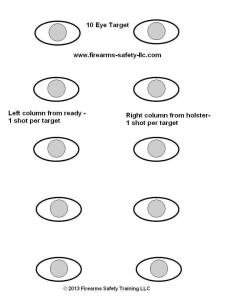
- Claude Werner’s Self Directed Decisional Shooting Drill. Claude uses this drill in his decision based shooting classes. I’ve come up with a way to shoot it by yourself and still get the benefit. Buy a few of each of these targets, or make reduced sizes for printing on 8.5″x11″ paper. Target A, Target B, Target C. Then, write the following on individual 3×5 notecards:
- Red
- Yellow
- Blue
- Green
- Triangle
- Square
- Circle
- Heart
- 1
- 2
- 3
- 4
- 5
- 6
- 7
Drill goes like:
If it’s a number you flip over, shoot the corresponding numbered shapes with one shot. If the number isn’t on your target, draw and hold at a low ready. If it’s a color you flip over, shoot the number of shots written in each shape of that color. If the color isn’t on your target, then draw and hold at a low ready. If it’s a shape you flip over, shoot the number of shots written on each shape that you flipped over. If that shape isn’t on your target, then draw to a low ready. You can add task loading to this by adding a verbalization aspect to the low ready hold. You can add dummy rounds into your magazines. You can also draw multiple cards, and force yourself to remember several cards before engaging. This can be a brain melter. (round count varies)

- Here’s another decisional shooting drill from Travis Haley: https://www.youtube.com/watch?v=xU2Weddts8k&feature=youtu.be
- The Dot Torture Drill – Here’s a link to the drill. This drill is a good one to do once every few months. Keep your old targets and compare your performance. Start at 3 yards and bump it back 1/2 or a yard once you can shoot it clean at 3 yards. This drill will have you working some strong hand, weak hand, reloads, transitions, and multiple shots on low probability targets. Even though the statistics don’t seem to show that many reloads or weak hand shooting happens in DGU’s, it’s still useful to know what it feels like to do those things. The first time you need to make a weak hand only shot shouldn’t be during a gun fight. (50 rounds)
Don’t fall into the trap of just ‘training the drill’. Here’s a great article about that topic. These drills should be an audit of your skills. Or in some cases, a baseline standard for what is ‘good enough’ to allow you to get through ‘average’ gunfights or armed encounters. I really think that these drills cover the most important shooting skills that will satisfy the 80/20 rule.
Other Resources for Drills:
If you want your head to explode from the sheer number of drills, here’s some more resources:
A great book by Michael Seeklander – Your Defensive Handgun Training Program
http://www.handgunlaw.us/documents/HandgunDrills.pdf
http://pistol-training.com/drills/dot-torture
In closing:
While these drills are a great start and the bell-curve of shootings seems to be pretty clear when looking at huge pools of data, there are outliers. It is in these rarest of rare instances that your level of proficiency and selection of tools will be the dividing line. John from Ballistic Radio just wrote about this. Ultimately, you must hold yourself to a higher standard and push to the limits that you are capable of pushing.

After all,
…Statistics are cold comfort after you discover that your case is the rare exception.
Jeff Cooper – Principles of Personal Defense
Thank you for reading this long post. I felt it was important and I needed to get it out. I hope you enjoyed it and got something from it. Please share it with your friends and use it to help people out of the murky depths of unconscious incompetence. Please subscribe to the blog, and shop through the G.U.G. Amazon Store click-thru to help support the blog.
Stay Safe and Protect the Brood,
Defensive Daddy


